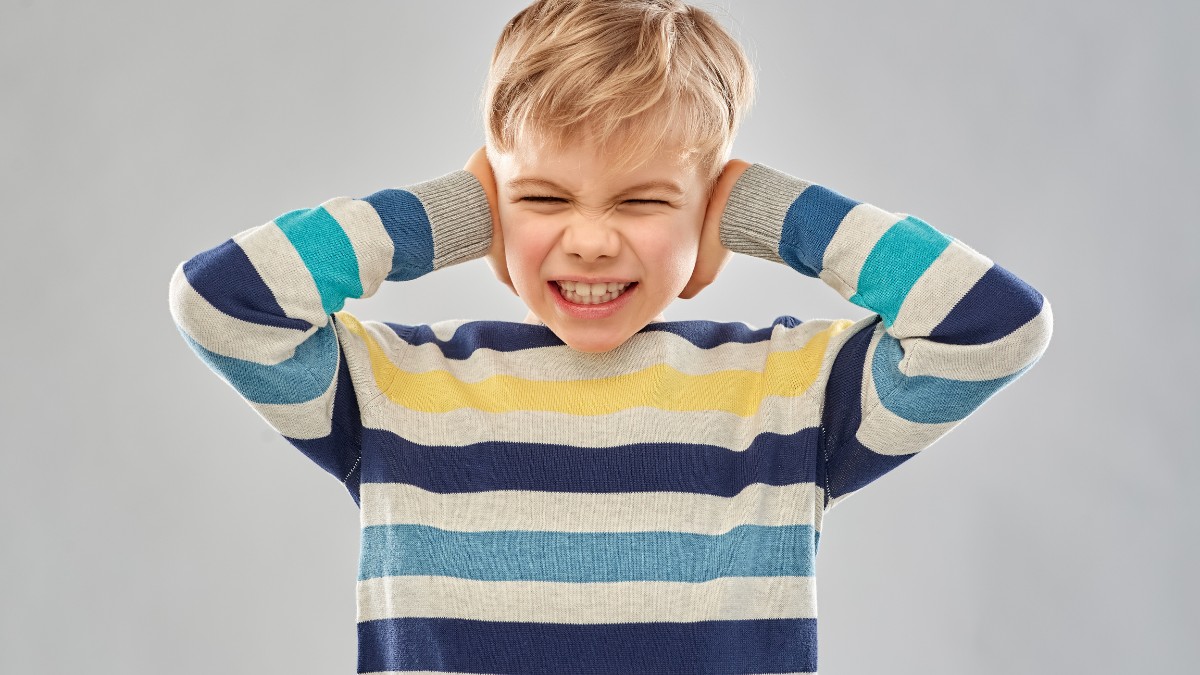Common Sensory Triggers in Autism: Causes, Examples, and Solutions

Key Points:
- Autism sensory triggers are environmental stimuli that can overwhelm children with autism, causing stress or behavioral reactions.
- Common sensory triggers include loud noises, bright lights, certain textures, and strong smells.
- Solutions for managing sensory triggers range from environmental modifications to therapeutic strategies like ABA therapy.
It is estimated that approximately 1 in 36 children in the United States have autism spectrum disorder (ASD), with many of these children experiencing heightened sensitivity to sensory stimuli. This heightened sensitivity, also known as sensory processing disorder (SPD), means that everyday environmental factors like lights, sounds, and textures can overwhelm them. For parents and caregivers, identifying and understanding autism sensory triggers is essential for managing these experiences and reducing discomfort for the child.
Sensory triggers can vary widely from one child to another, but by recognizing common patterns and taking proactive steps, families can help ease some of the distress associated with these sensory overloads. In this article, we will discuss common autism sensory triggers, their causes, and potential solutions to reduce or manage these triggers.
What Are Autism Sensory Triggers?
Sensory triggers are specific environmental stimuli that provoke strong emotional or physical responses in children with autism. These can range from noises and lights to textures or smells that may cause discomfort, anxiety, or frustration.
Children with autism process sensory information differently. Some may be hyper-sensitive, meaning they experience sensory input more intensely than others, while others may be hypo-sensitive, meaning they may have a reduced response to stimuli. Understanding these sensory differences and triggers is crucial for parents and caregivers to help manage and reduce distressing sensory experiences.
Solutions for Managing Autism Sensory Triggers
Fortunately, there are many strategies parents can use to help reduce the impact of autism sensory triggers on their child’s daily life. Managing sensory overload starts with identifying the specific triggers and creating a more sensory-friendly environment. Below are some solutions that can help:
1. Create a Sensory-Friendly Space
A dedicated sensory-friendly space at home can help children with autism manage sensory triggers. This space should be quiet, with soft lighting, comfortable seating, and minimal distractions.
Some parents use noise-canceling headphones or soft music to drown out overwhelming sounds. A calming space allows children to retreat and self-regulate when they become overstimulated.
In addition, consider using weighted blankets or stuffed toys that provide a sense of comfort and security. Many children with autism find deep pressure calming, which can help reduce anxiety and restore calm.
2. Use Sensory Tools and Devices
There are many sensory tools that can help children with autism manage sensory overload. Some tools may include:
-
Noise-canceling headphones
These can block out loud or distracting noises, providing relief in busy or noisy environments.
-
Fidget toys
These provide tactile stimulation and can help children stay calm during situations where they might feel anxious or overstimulated.
-
Chew toys or oral motor devices
These can help with sensory input for children who seek oral stimulation and may be a calming mechanism for those with oral sensory issues.
3. Implement Gradual Exposure to Triggers
If certain sensory experiences, like loud noises or bright lights, are overwhelming, gradual exposure can help a child become more comfortable with those stimuli over time. This approach is often referred to as desensitization. The goal is to slowly introduce the child to the trigger in a controlled and supportive manner, starting at a low intensity and gradually increasing it as the child becomes more accustomed.
For example, if a child has a fear of the sound of a vacuum cleaner, you might start by turning the vacuum on from a distance for a few seconds and gradually increase the duration as the child becomes more comfortable with the sound.
4. Offer Predictability and Routine
Children with autism often feel more secure when they know what to expect. To reduce the chances of encountering sensory overload, create a predictable routine that minimizes unexpected triggers. Knowing that they will experience certain activities at specific times can help children manage their sensory experiences more effectively.
For example, avoiding crowded environments or busy stores at peak times can make outings less stressful. Similarly, preparing your child for situations where they might encounter overwhelming stimuli (like loud concerts or busy events) can help them mentally prepare and reduce anxiety.
5. Behavioral Therapy for Sensory Processing Challenges
Behavioral therapies, particularly ABA therapy, can be incredibly helpful for children with autism in managing sensory processing challenges. ABA therapy uses positive reinforcement and structured interventions to teach children coping strategies for managing sensory overload.
An ABA therapist can help children identify sensory triggers, develop coping mechanisms, and practice strategies to avoid or minimize sensory overwhelm. Through consistent therapy, children can learn to better regulate their responses to sensory input, leading to improved emotional and behavioral regulation.
ABA Therapy and Sensory Regulation
At Acclimate ABA, we offer personalized ABA therapy programs in Utah that support children in managing autism sensory triggers. Our ABA therapists are trained to work with children to identify their unique sensory needs and provide them with effective strategies to regulate sensory input. With a focus on building communication skills, emotional regulation, and social behavior, we can help your child navigate the world with greater ease and confidence.
If you’re looking for high-quality ABA therapy to support your child’s sensory processing needs, contact us today. Let us help you develop the tools and strategies your child needs to thrive.


